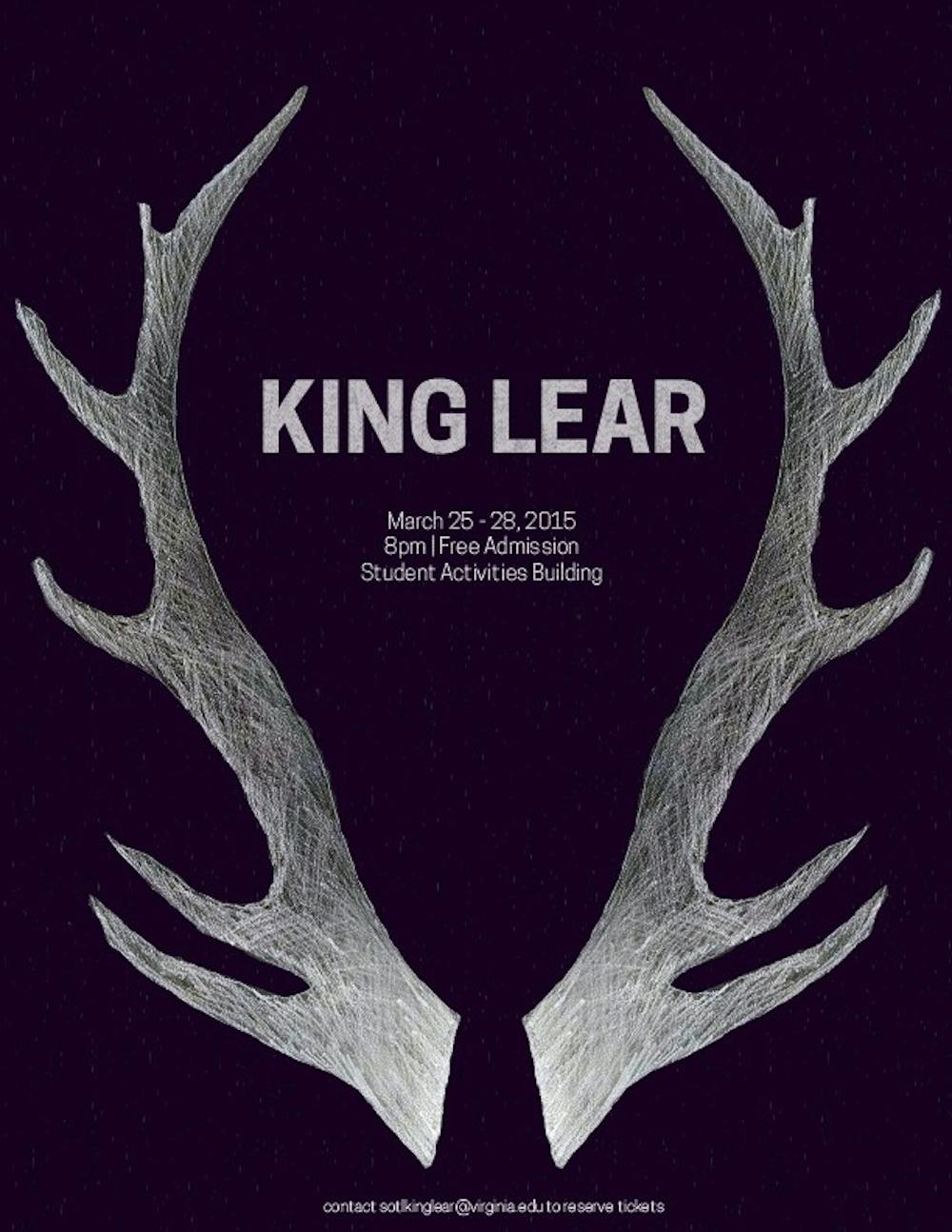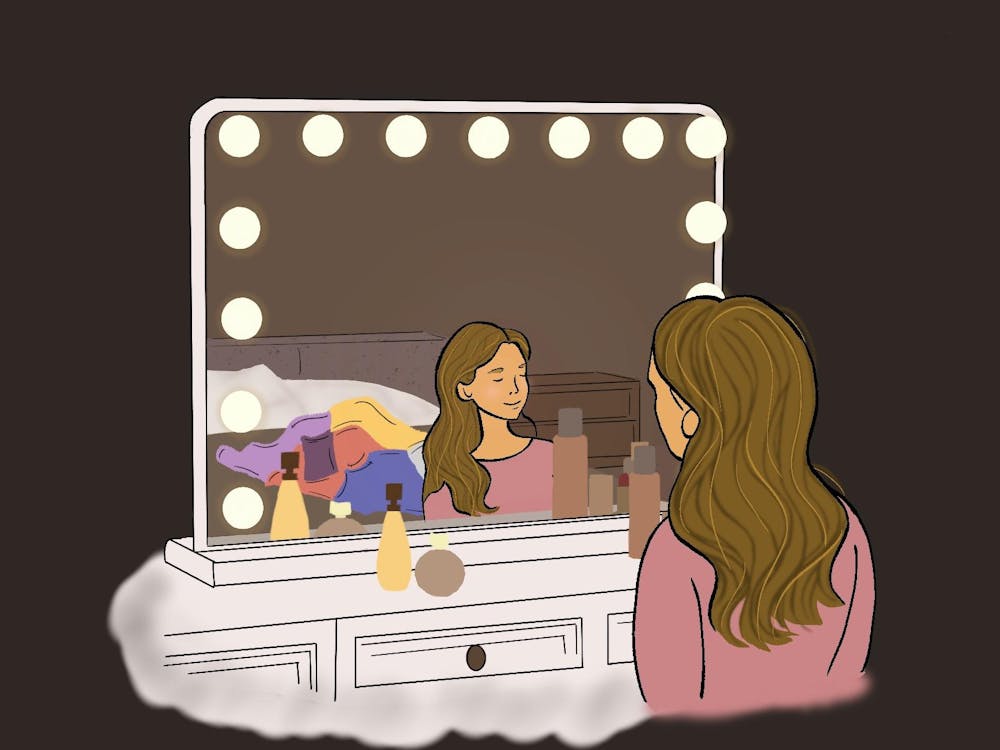Shakespeare On The Lawn takes on The Bard’s classic, “King Lear,” in its contemporary, yet timeless rendition of the text. The complex plot allows for an interesting array of characters, but leaves room for the student cast to spice up the Shakespearean tropes.
Giving female characters more agency and including both classic folklore and modern folk music makes the production more relevant to today’s college audience. The show opened Wednesday and runs through Saturday
Arts & Entertainment sat down with director Nora Zahn, a third-year College student, to discuss how she engaged with this multifaceted tale.
Arts & Entertainment: I understand that this play has a multidimensional plot, much more complex than other Shakespeare plays. What made you choose this specific play? Additionally, what was the hardest part about directing such an elaborate story?
Nora Zahn: A little bit before this time last year I was on board as assistant director of a production of “King Lear” with a good friend of mine who was set to direct it. As we worked on our proposal to present to the membership of Shakespeare on the Lawn, I became more and more engrossed in this beautiful text. The director ended up deciding to transfer from U.Va. a couple months after we were elected for reasons completely unrelated to the show, but by that point I was so caught up in “King Lear” that I could not just let it go. So I worked on it over the summer, re-proposed the show to Shakespeare on the Lawn, and was elected director at the beginning of this school year. This is the first time I've directed anything this big.
And, yes! “Lear’s” plot is undoubtedly intricate and complex, but it has to be in order to allow for all of the fantastic characters that appear. This play tells the story of two families — two plot lines — that become more and more entangled over the course of the text...Because of this, we get [a] bold cast of not just one, but two plays' worth of lead roles … [T]here are so many ... amazing, fleshed out, multidimensional characters that appear substantially and consistently throughout the show, far more than any other Shakespeare play I have read or seen. That's why I'm directing this show.
A&E: How much rehearsal time went into this production? Also, how does casting work for the play?
NZ: Actors can bring in an optional monologue of their own to deliver for us, and then we give them short excerpts of monologues or "cold sides" from the play to read ... After three days of auditions we compile a list of people we're interested in or would like to see more of, and then hold callbacks the following day ... At callbacks we group actors together with different scenes and parts to see how well they work together, and by the end of the day we have enough information to put together our final cast. We have been rehearsing for three and a half to four hours per night, four nights per week since then. It's a lot, but it's all part of the process.
A&E: How much freedom do the actors have to assume their role, and how much is specifically constructed by the director?
NZ: Great question about artistic choice! That tension is what's really at the heart of the actor/director relationship in the rehearsal process, and all directors handle it a bit differently. I came into this with a few very specific choices about certain characters that are tied to my interpretation of the text and the general artistic vision for this production, so I had a couple parameters that were pretty non-negotiable for certain actors. Other than that, though, I believe very strongly that actors should have the freedom to mold their characters in ways they see fit — it feels presumptuous to suggest otherwise. … So much of what these actors do onstage is not at all what I envisioned during my work on this project in the year prior to casting the show, and that is an enormous gift.
A&E: How do you deal with making Shakespeare accessible to the modern viewer? How closely does the representation of “King Lear” stick to the original text, and what changes were made and why?
NZ: Another great question. With regard to the text, all of the language in our production is original text from the play, but we did a lot of cutting in order to decrease the show's runtime.
But fidelity to the text doesn't mean that everything about the show screams Renaissance England! The story of “King Lear” is actually loosely based off an ancient Celtic myth, and various plot devices and linguistic aspects of the play reference all sorts of different eras. ... I did not feel pressured to set my production at a specific, contextualized point in history. Instead we ended up combining an earthy, forest-like set with somewhat neutral lights and completely acoustic, manually produced sound in order to bring in a little bit of that Celtic inspiration. But this is all contrasted with costumes that are somewhat modern to represent the bold personalities of the characters they clothe. [...]
What makes this show most accessible to the modern viewer, though, are its characters and the way our actors handle them. We definitely make some statements about gender in this production by using subtle actions to give the already existing women of the text even more agency and by swapping the gender of an additional character. ... But the actors themselves also bring a modern perspective to the language, taking advantage of their supreme grasp of the text to manipulate the words they speak and give them a twenty-first century twist.
A&E: How much influence did other productions of this play have on your direction for it? Are there any specific productions of it that influenced you?
NZ: I was able to see a live production of “King Lear” at Theater for a New Audience in Brooklyn about a year ago. During my research for the show I also watched countless scenes and excerpts from various productions online, as well as the full telecast of the Royal Shakespeare Company's 2007 production directed by Trevor Nunn and starring Ian McKellen as Lear. ... I have also read reviews of quite a few U.S. productions that have gone up over the past few years.
All of this research and exposure to different versions of the show was extremely valuable. With a play as studied and well-known as “King Lear” there are certain tropes and images that have become famous throughout the history of its performance. Taking a look at the variations on these landmark moments … gave me a sense of how similarly or differently I wanted to handle the show and its notoriety. Our production pays homage to the popular staging of some of these famous images while completely rejecting the performance tradition with others. It's a pretty exciting set of choices to have the opportunity to make.
A&E: What are you most proud of about this production? If you had to give one reason for people to come see it, what would it be?
NZ: More than anything else, I am proud of these talented actors and the thought and ingenuity that they bring to this wild plot and challenging set of characters. Their performances have continued to impress me over and over again in new ways, and the fearlessness with which they tackle this renowned text is striking. They are also an absurdly funny and ridiculous group of people–even when they're messing around in rehearsal. But don't tell them I said that.
Arts & Entertainment also sat down with King Lear himself, Art Kulatti, a fourth-year College student, to hear about how he assumed the role of King Lear and embodied Lear’s insanity.
A&E: How did you prepare for the role of King Lear?
AK: A lot of my preparation came from my reading and understanding the play, as well as having seen it performed by Shakespeare in the Park in New York, with John Lithgow as the mad king. One cold and windy night in January, Brian [Walter], our assistant director, and I went on a long walk around Grounds to work on my physicality in capturing not just how someone will move and stand in a cold storm, but also to work on my physicality as an old man, which was very helpful.
A&E: How did you relate to and get inside the thoughts of King Lear, as he is a public figure with little blatant statements of his motives and feelings?
AK: I think out of all of the characters, the play spends the most time exploring the intimate thoughts of Lear. Precisely through Lear's madness, Shakespeare reveals exactly what he is thinking as he uncontrollably blurts something out, like "Filial ingratitude!" More so, when Lear fully succumbs to his madness, there is no filter. He's not talking to anyone but himself. True, characters like Edmund do specifically reveal their exact motives and their plans in soliloquies, but Lear reveals even his own subconscious — what makes him most vulnerable, most angry, most sad.
A&E: How do you go about portraying King Lear’s insanity, assuming you do believe that he goes insane?
AK: What I like most about Lear's insanity as an actor is that he's not faking it. Unlike Hamlet, or Titus Andronicus — whom I played last year — Lear has no control over his madness and so he does not care about what the other characters think of him … he becomes completely intimate with the audience as he pours his heart out to them. There are many causes for his insanity, such as his weakening mind and body, his rage, and his extreme passion, all of which build up throughout the first two acts to reveal a man, aware of his madness, yet powerless to it.
I feel most comfortable in Lear's madness because it is so pure. There are no extraneous motives or actions, all of his movements and thoughts flow seamlessly out of his subconscious. In finding motivation for the choices as an actor there is no “Why?” — only “Why not?”
The show begins at 8 p.m. in the Student Activities Building March 25-28.







